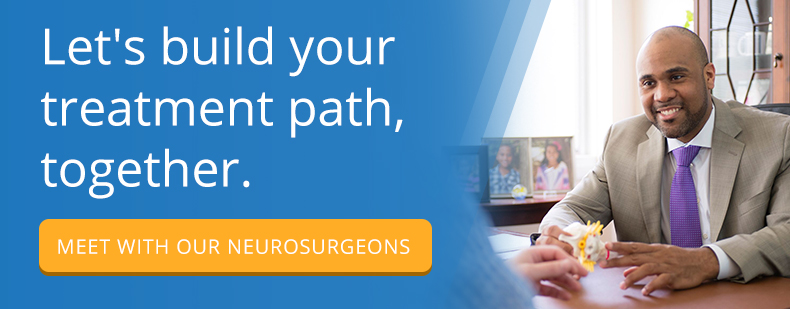Whether you have already scheduled your surgery for Chiari I malformation or are still in the decision-making stage, it can be helpful to make a pros and cons list regarding your procedure. Taking the pros and cons into consideration can help you make choices regarding treatment options. It can also help set your mind at ease about your upcoming surgery, if you have made the decision to move forward with surgical treatment.
The cons of Chiari malformation surgery largely involve the risks of surgical intervention. The pros of the procedure, which outweigh the cons, include relief from symptoms such as headaches, nausea, dizziness, memory issues and more.
About Chiari Malformation
To understand surgery for Chiari malformation, it is helpful to first know about how the malformation itself develops. As your brain grows, your skull grows around it, conforming to the anatomy to form an ideal protective case. However, sometimes the skull does not grow adequately large, and there is insufficient room for the brain.
In Chiari I malformation, there is not enough room at the back of the skull for an area of the brain called the cerebellum. As a result, a portion of the cerebellum (tonsils) gets pushed down through the space at the base of the skull where the spinal cord passes through, creating a blockage. The obstruction in CSF flow (cerebrospinal fluid that surrounds the brain and spinal cord), creates pressure leading to your symptoms.
About Surgery for Chiari Malformation
There are different procedures used to correct Chiari malformation, but the treatment goal of each is to help relieve the anatomical blockage and resulting pressure. The two most common procedures are often used in combination: decompression surgery and cervical laminectomy.
During decompression surgery, the surgeon removes a section of the base of the skull to create more space for the cerebellum. This can be done using a traditional surgical approach or a minimally invasive approach. While both accomplish a similar goal, a minimally invasive approach uses special instruments and techniques, allowing for a smaller incision, reduced pain and reduced healing time.
Cervical laminectomy surgery for Chiari malformation helps create more space around the spinal cord. The surgeon removes a section from the uppermost vertebrae, at the very top of the neck, relieving pressure to help reduce symptoms and damage to the spinal cord.
Pros of Surgery for Chiari Malformation
The most obvious benefit in favor of having surgery for Chiari malformation is relief from the symptoms you are experiencing. More than half of Chiari malformation patients experience relief from symptoms following surgery, including:
- Headaches
- Nausea
- Dizziness and vertigo
- Difficulty sleeping
- Trouble with speech
- Difficulty swallowing
- Neck pain
- Numbness of face and/or hands
- Memory issues
- Problems with vision
Aside from relief from the symptoms you are already experiencing, surgery for Chiari malformation will interrupt the disease process and prevent further damage. This means that, following surgery, your symptoms will not increase or get worse.
Keep in mind that every patient is different, and your expected outcomes will depend upon the severity of your Chiari malformation, the duration and extent of your symptoms, and other health problems you may have. Your doctor will be able to give you a better idea of what benefits you can expect following surgery for Chiari malformation.
Cons of Surgery for Chiari Malformation
As with any surgery, there are some general risks as well as some risks specific to the surgery for Chiari malformation. Some universal risks related to having surgery include:
- Bleeding
- Blood clots and/or stroke
- Infection
- Negative reaction to anesthesia
- Nerve damage, temporarily or permanently
Following Chiari malformation decompression surgery, there are two potential risks worth considering, both of which require special management.
The first is CSF fluid leaking from the dural membrane which covers the brain, gets punctured during surgery and goes unnoticed. This could lead to headaches, nausea, fluid collecting under your incision, and/or clear fluid leaking from your ear, nose, or incision. This condition will typically resolve on its own if it is contained to the space under the skin, following a period of bed rest. Increasing fluids and drinking caffeinated drinks can sometimes help as well.
The second potential risk is called hydrocephalus, which occurs when excess CSF surrounding the brain cannot be absorbed, causing an increase in pressure. Should this occur, your surgeon will place a temporary drain to help divert the CSF from the brain, until the problem resolves. In rare cases, a permanent diversion device called a shunt that drains to the abdomen is placed, restoring intracranial pressure to a normal level.
Why the Pros Outweigh the Cons
When considering this pros and cons list, there is one very important factor to keep in mind. If your doctor has recommended that you undergo surgery for Chiari malformation, he or she has considered the exact same pros and cons. The surgeon’s specialized knowledge and experience were used to assess your symptoms, imaging, and physical findings and allowed him or her to conclude that for your specific case the benefits of surgery outweigh the cons of not treating the malformation, otherwise surgery would not have been recommended.
As mentioned earlier, over 50 percent of patients experience resolution of all symptoms following surgery for Chiari malformation. Another 20-30 percent will experience some improvement, while the remaining patients will require further medical treatment. That means that 70-80 percent of people feel better following surgery. Furthermore, because of the progressive nature of symptomatic Chiari malformations, surgery prevents further damage from occurring.
It is important that you feel comfortable before, during and after your surgery for Chiari malformation. If you find that you have further questions or concerns, be sure to discuss them with your doctor. He or she will be able to offer you more specific outcome expectations related to your individual condition, and he will be happy to help you have confidence in your treatment choice.


